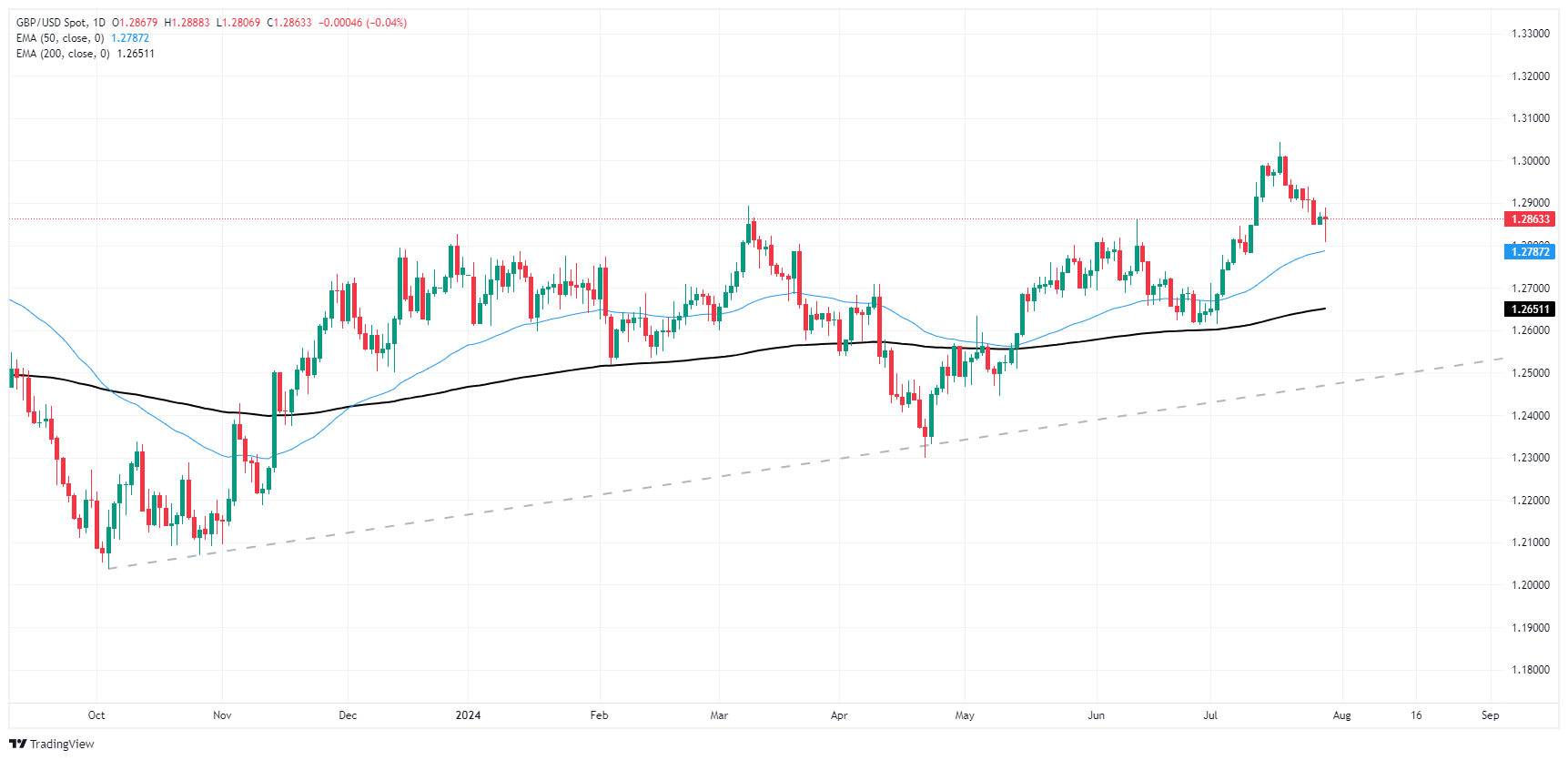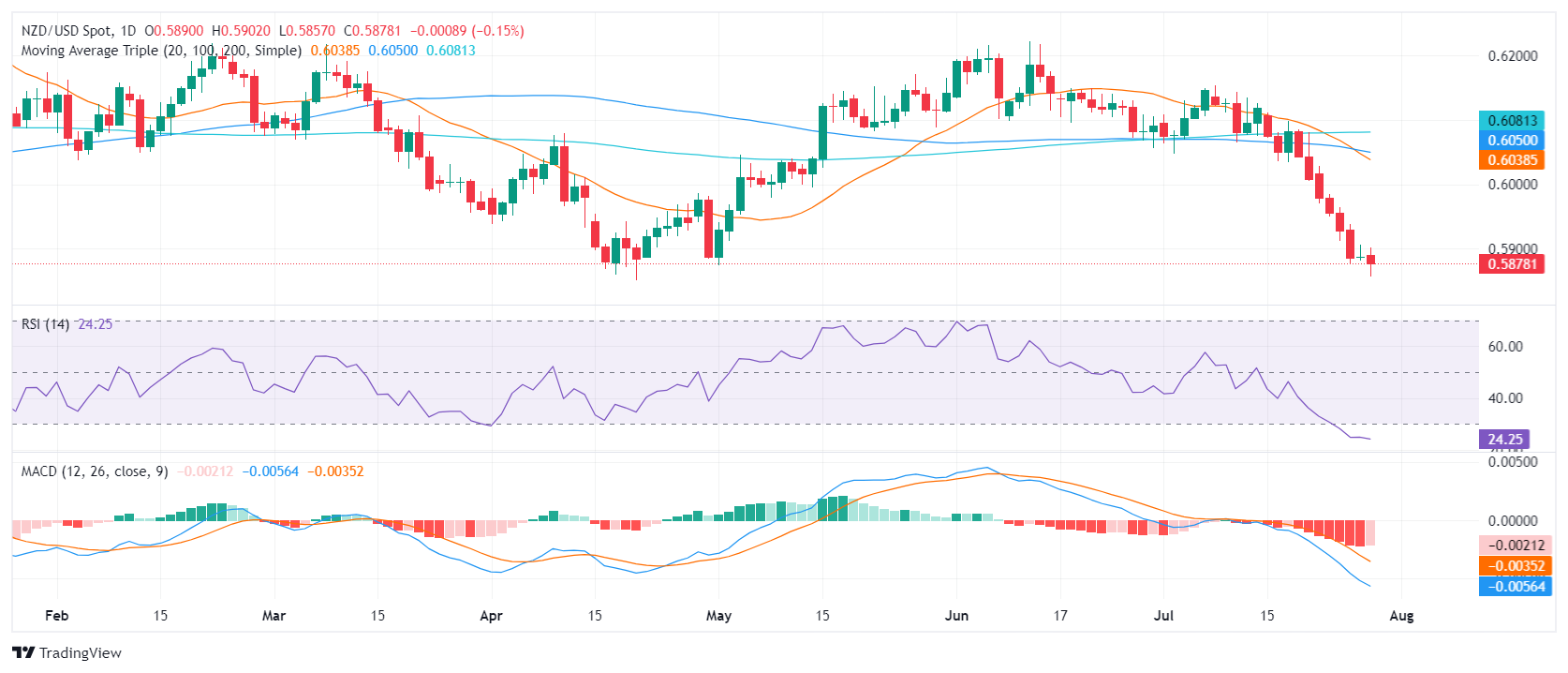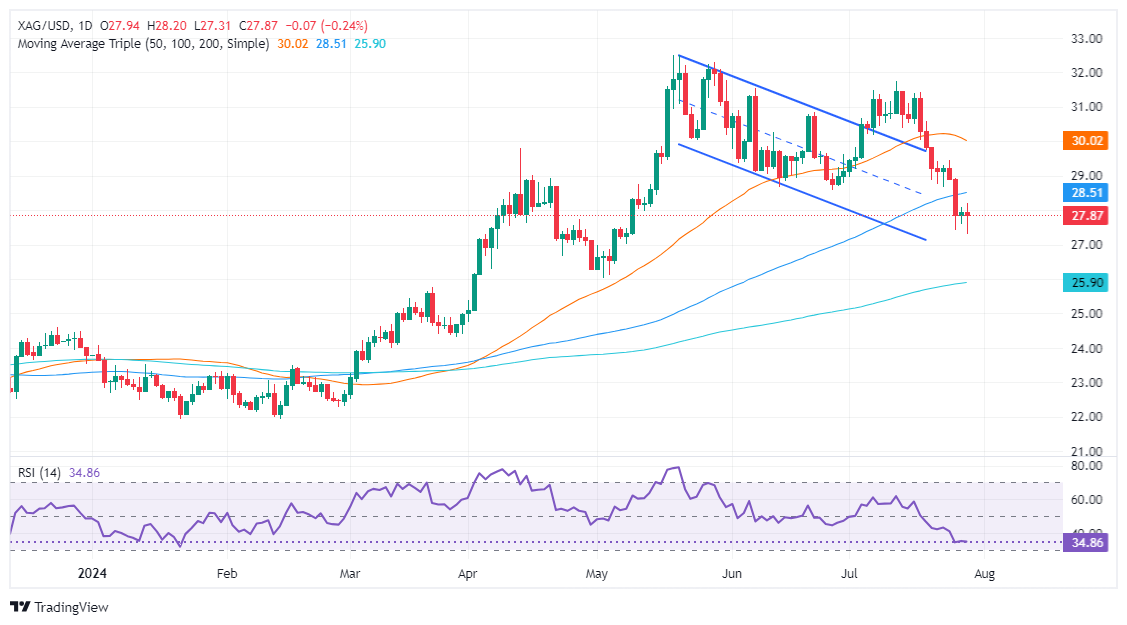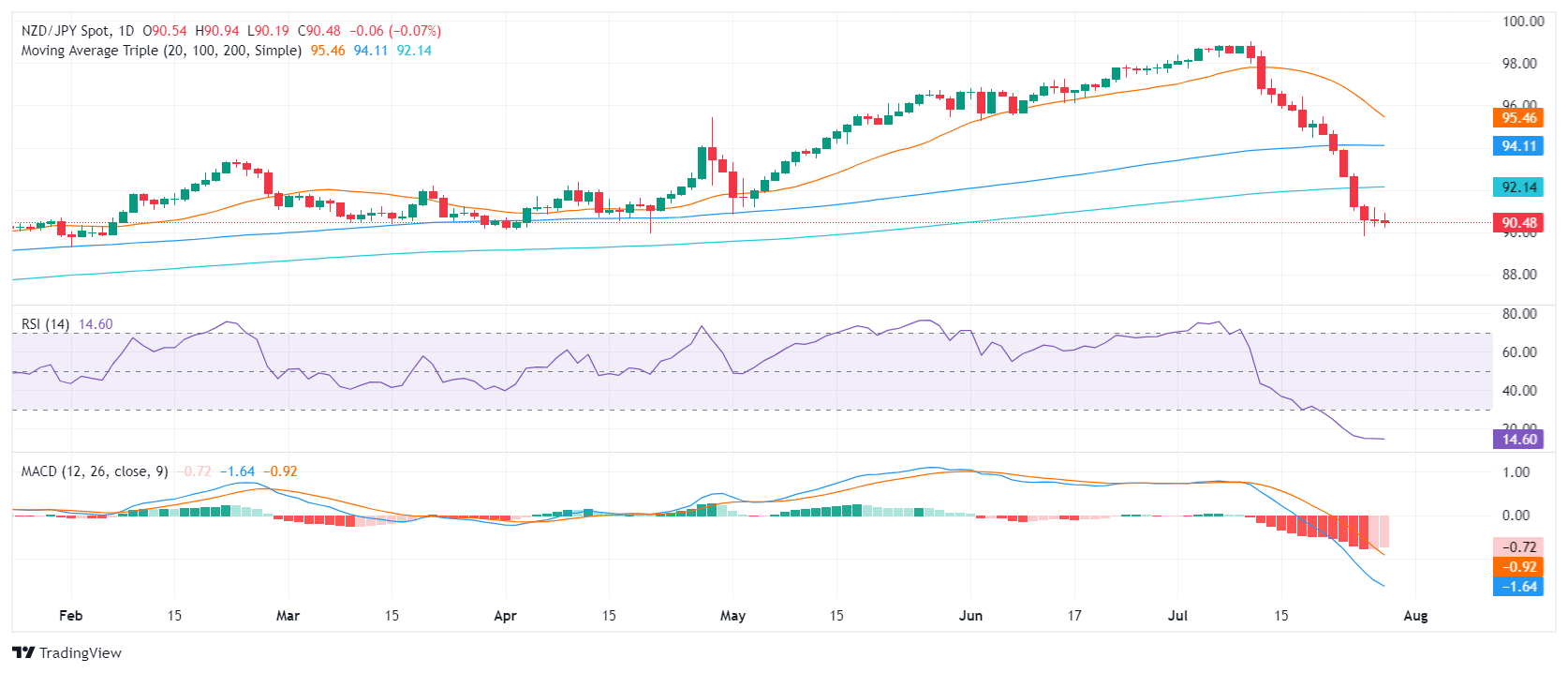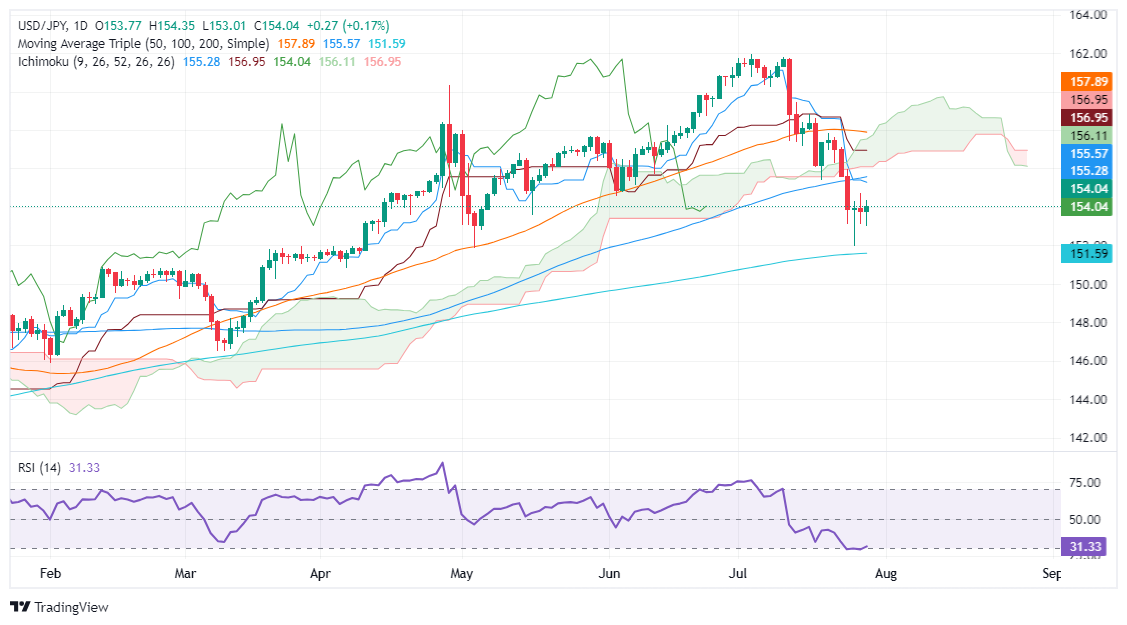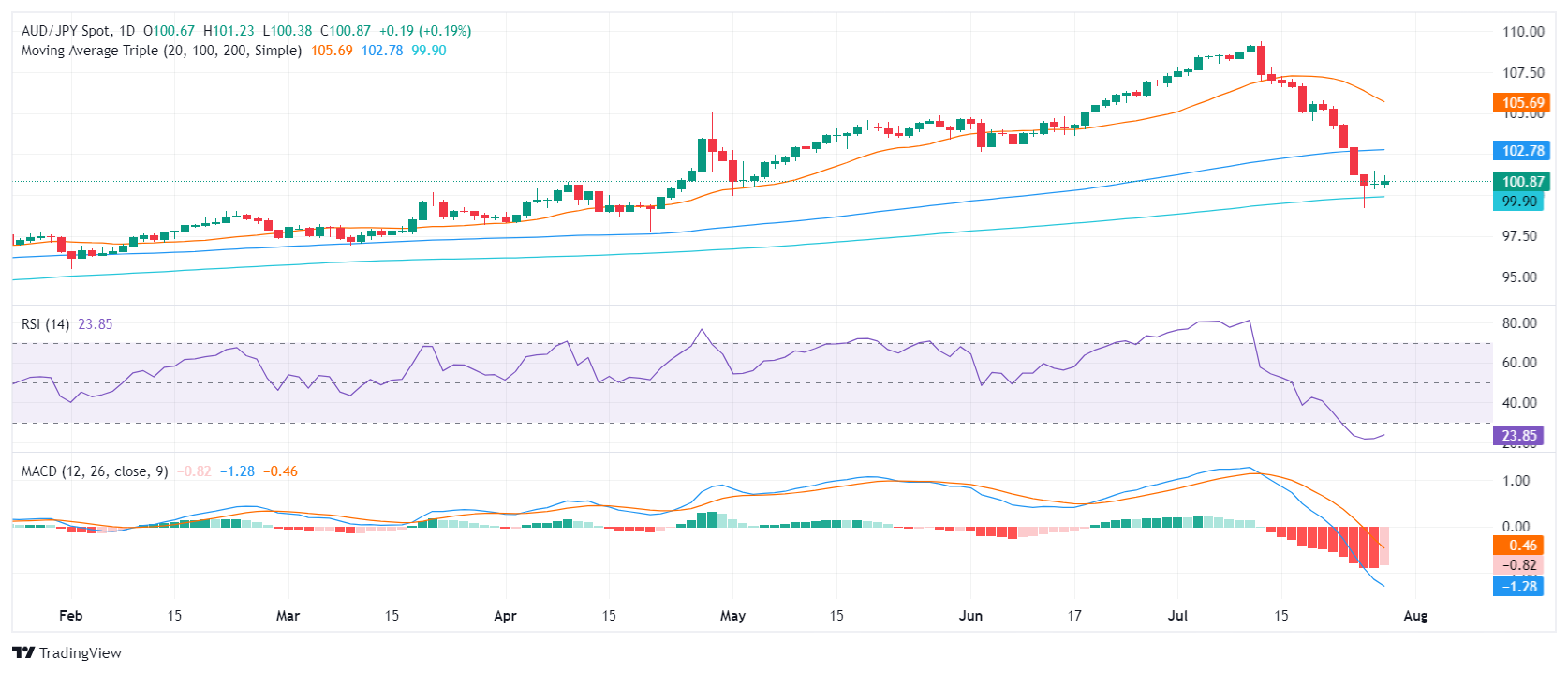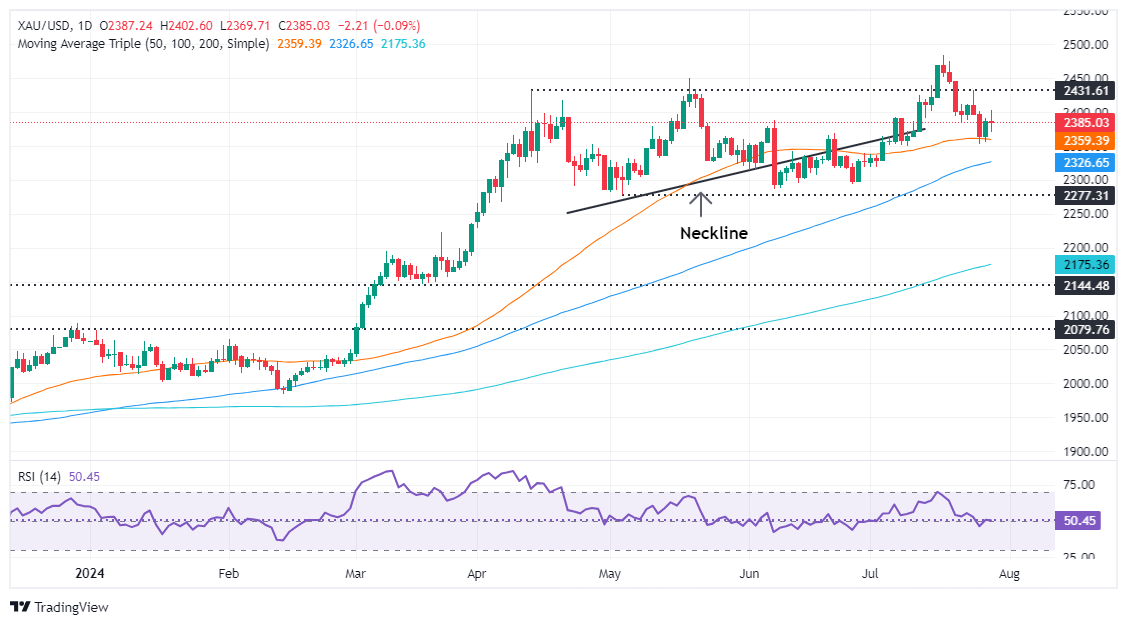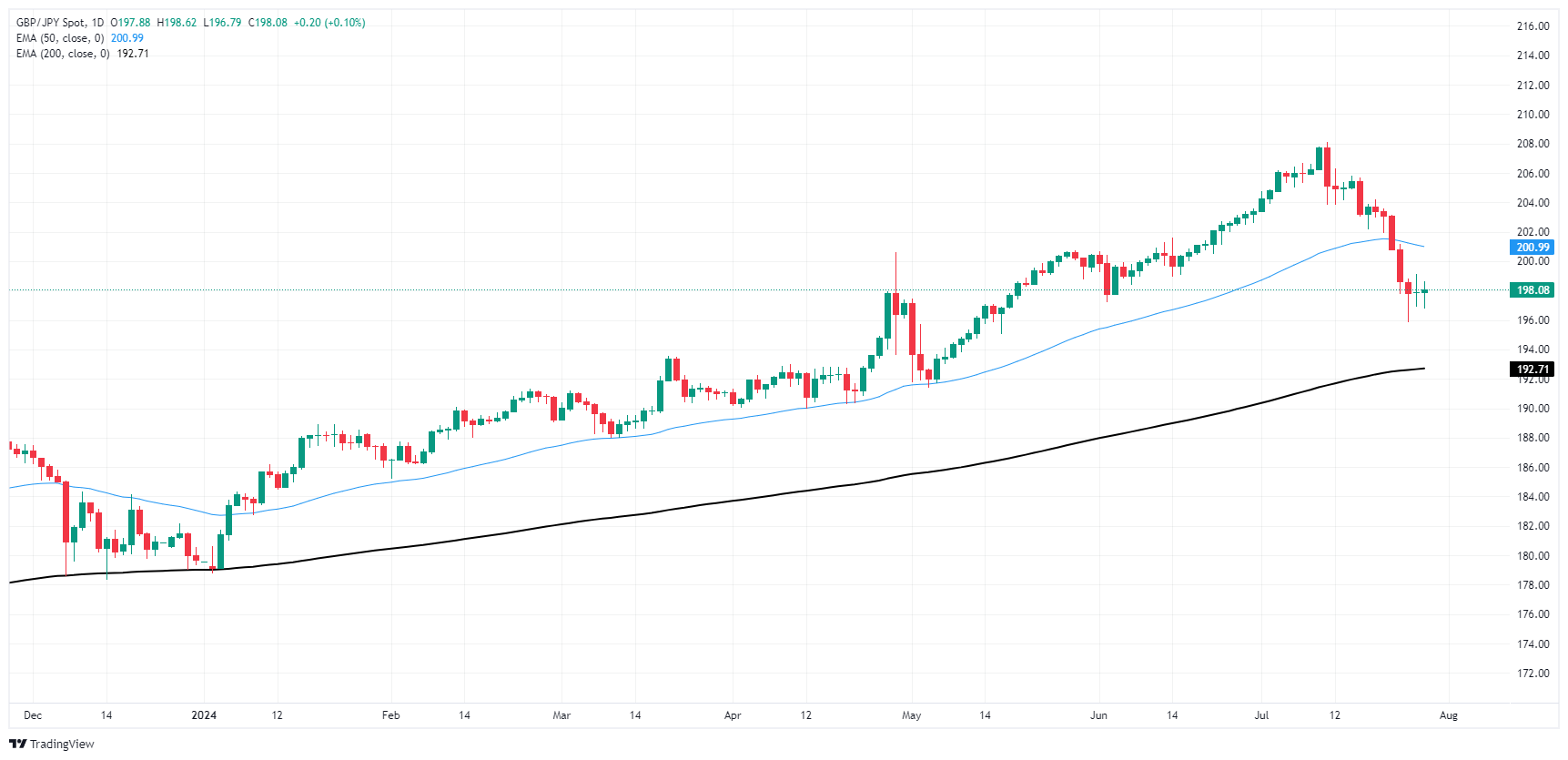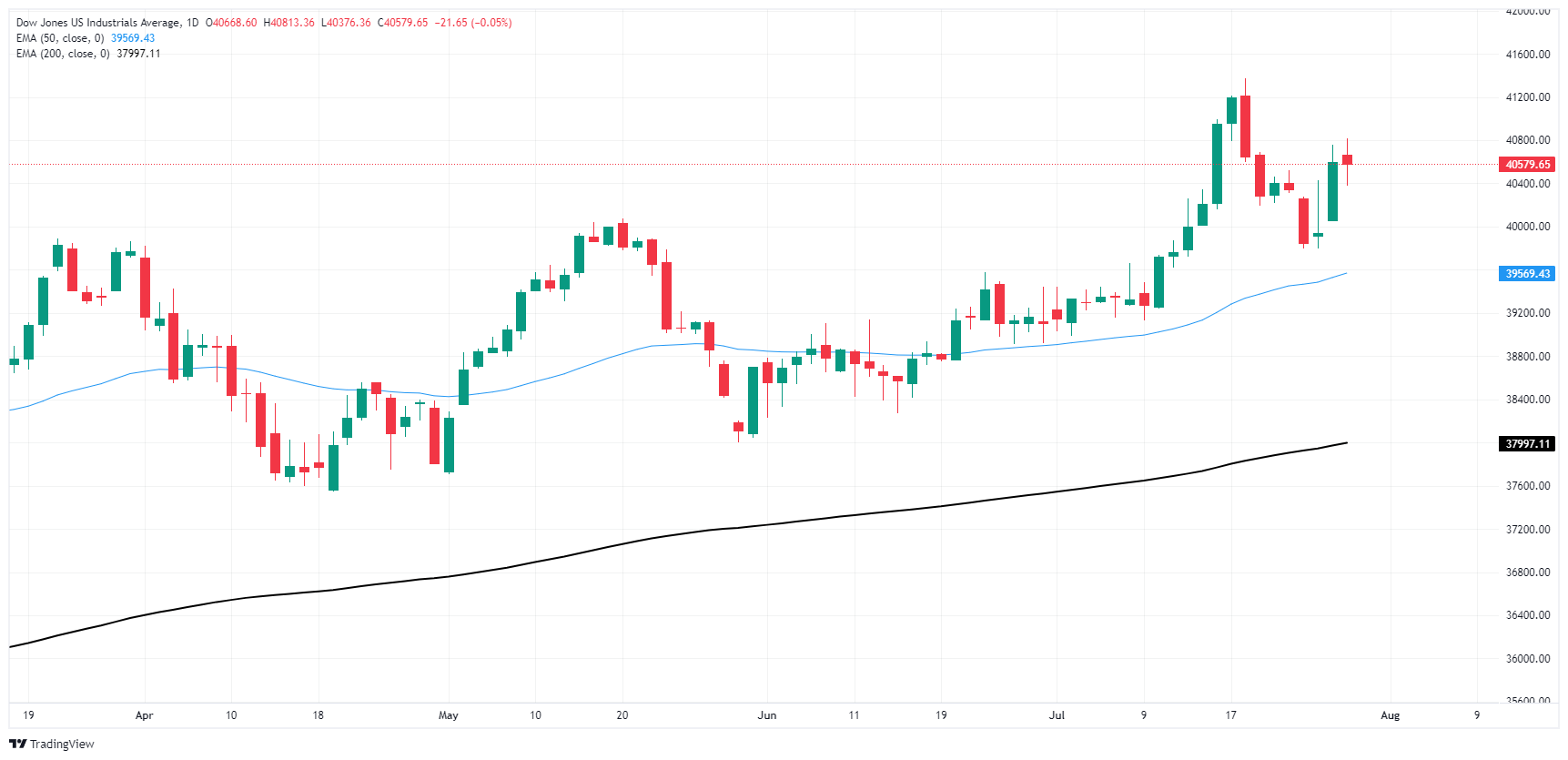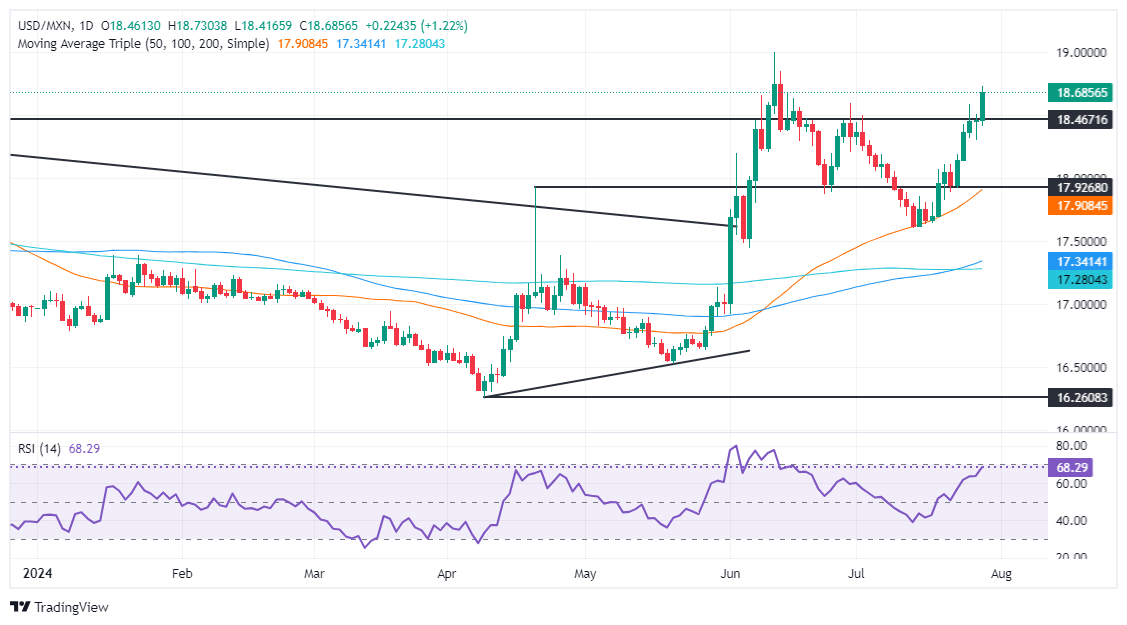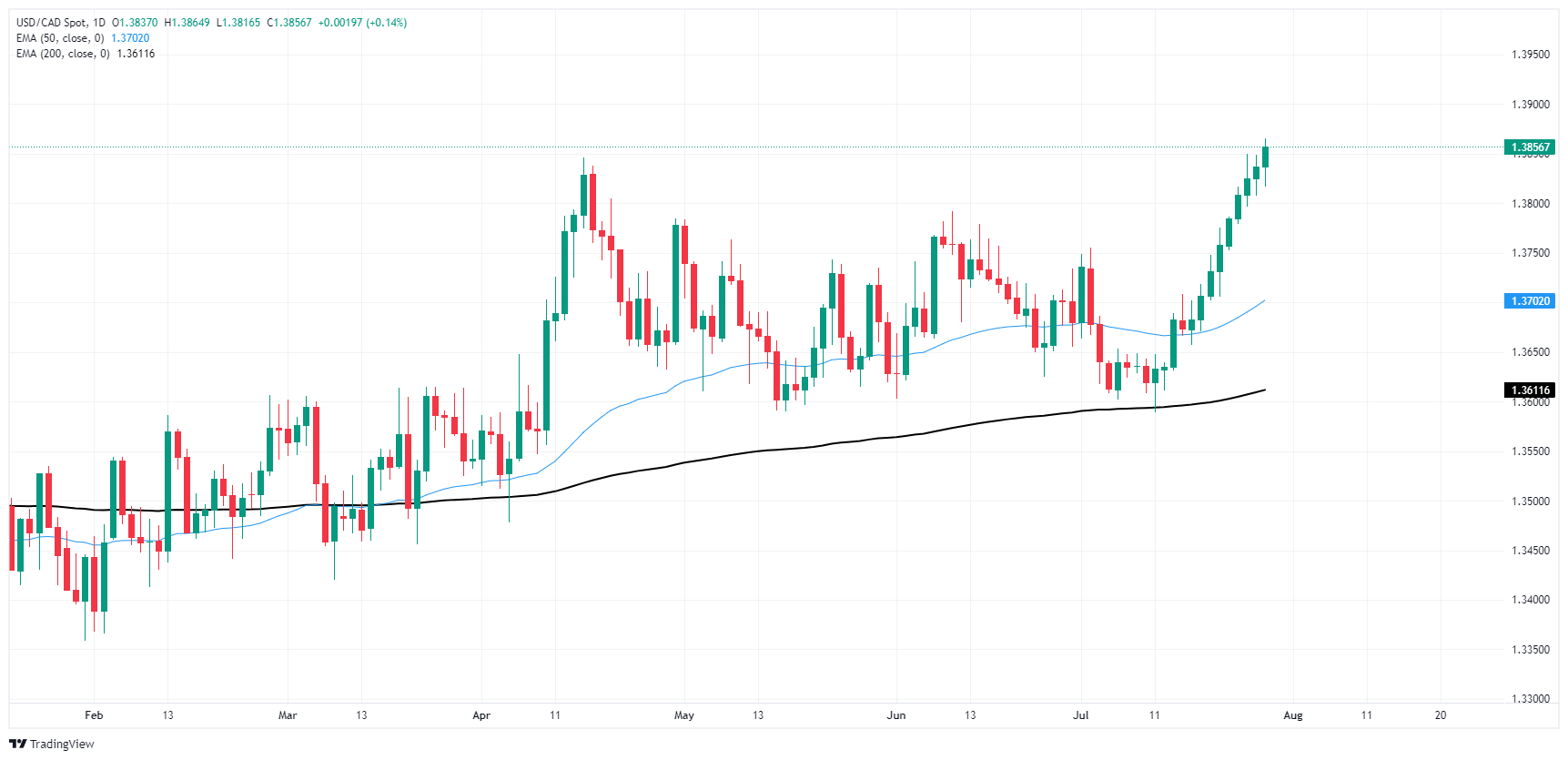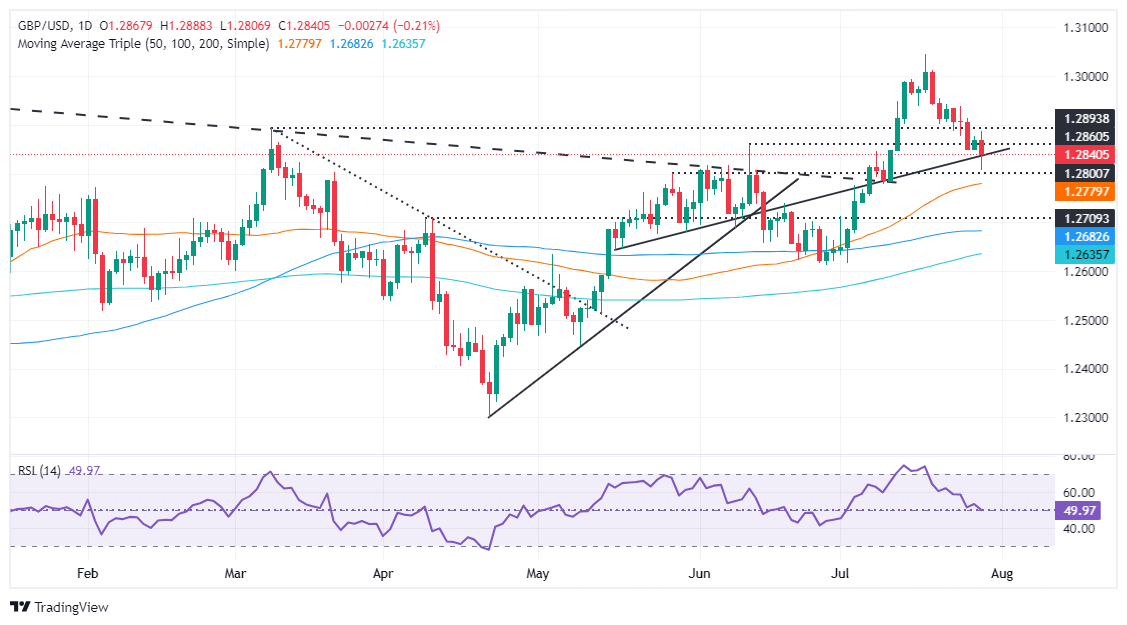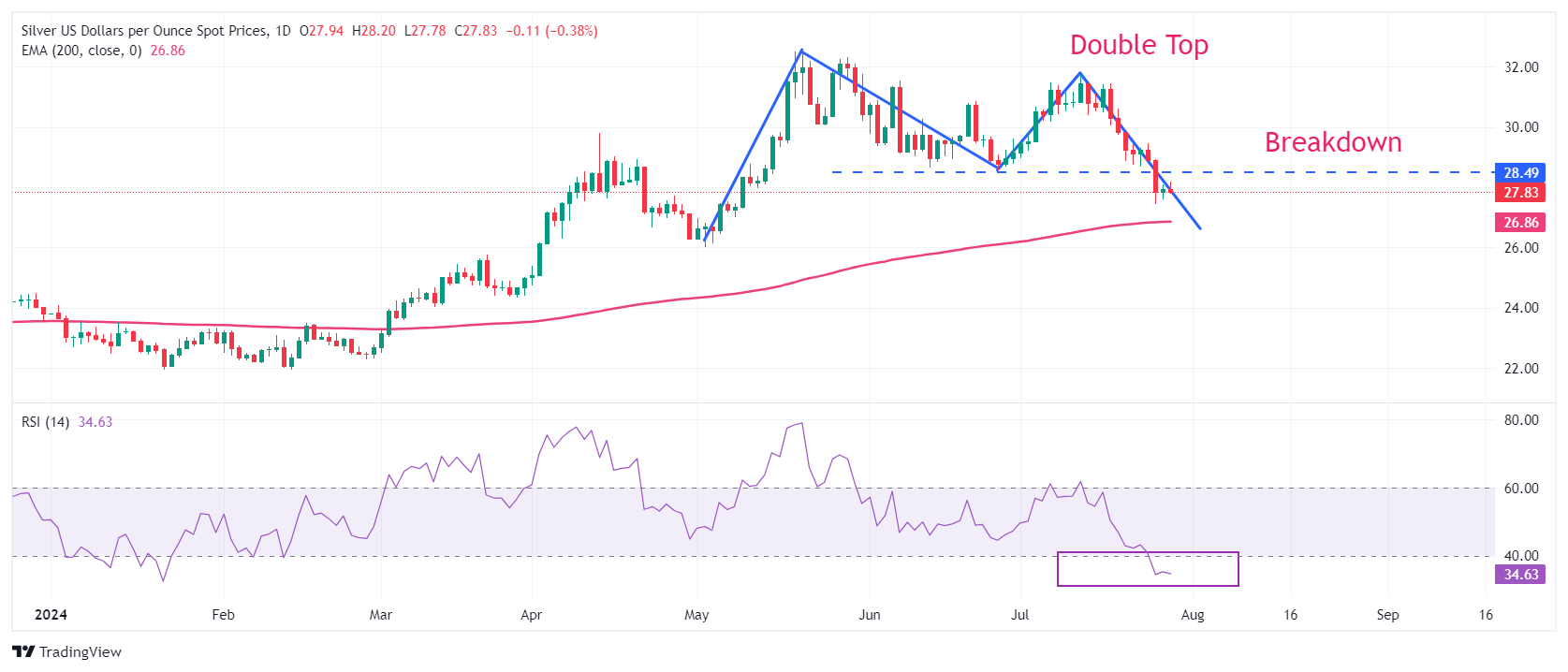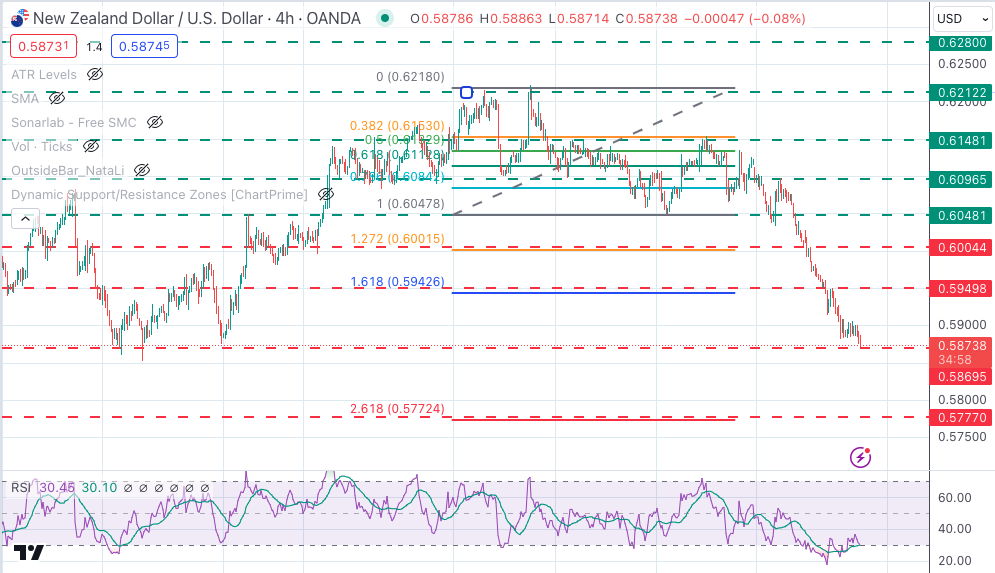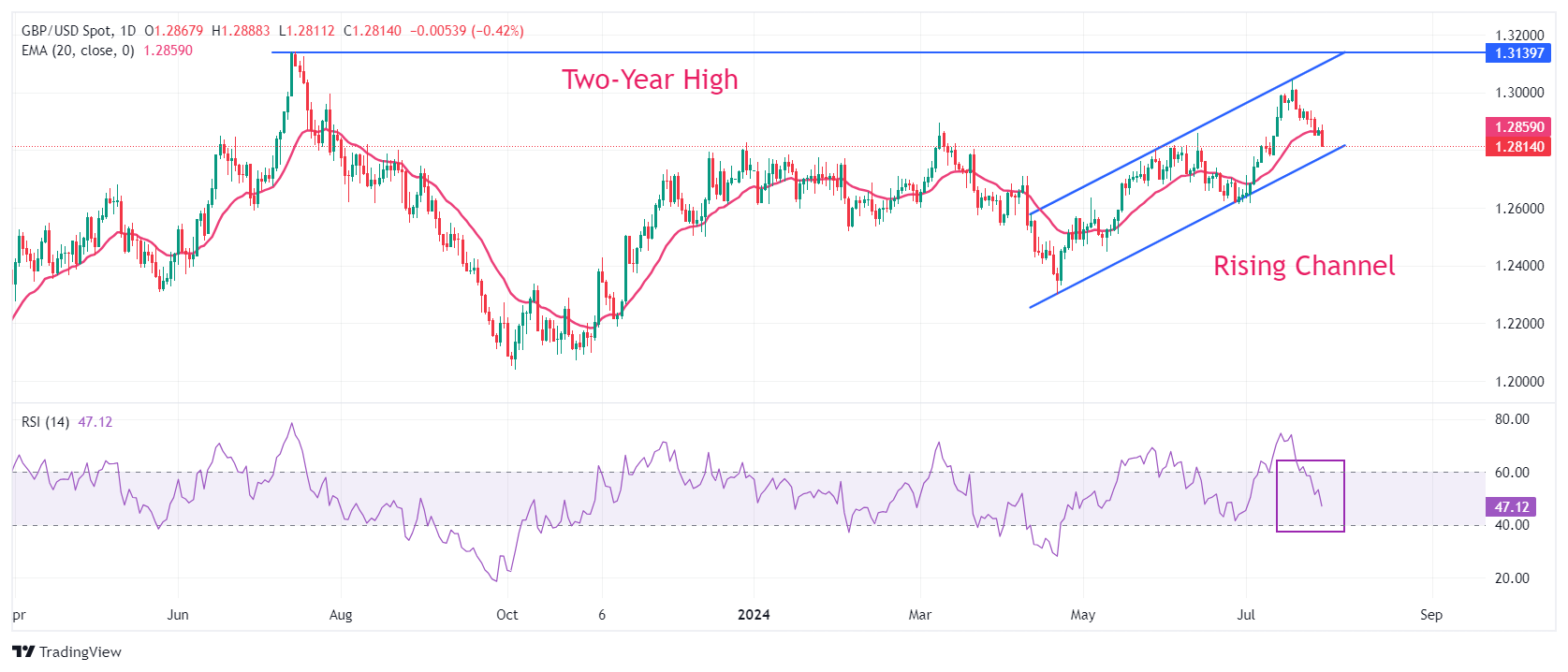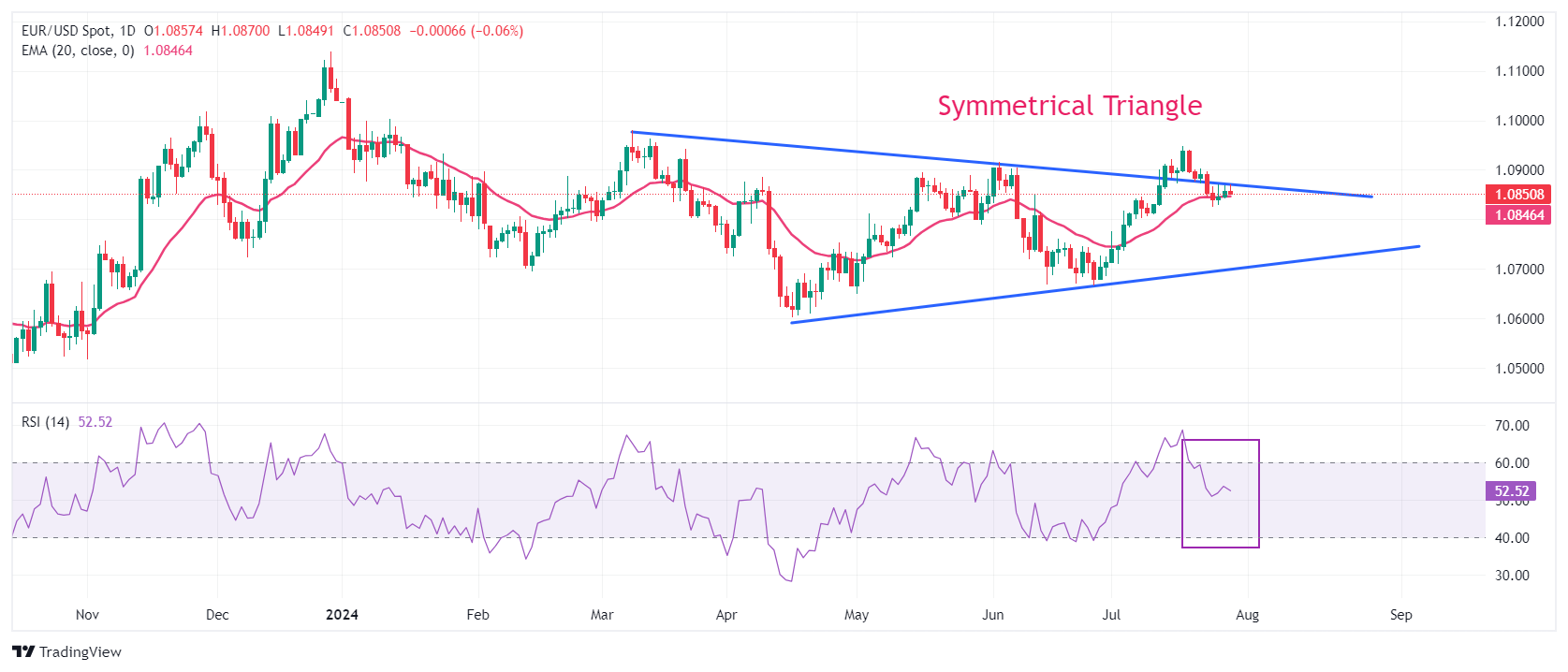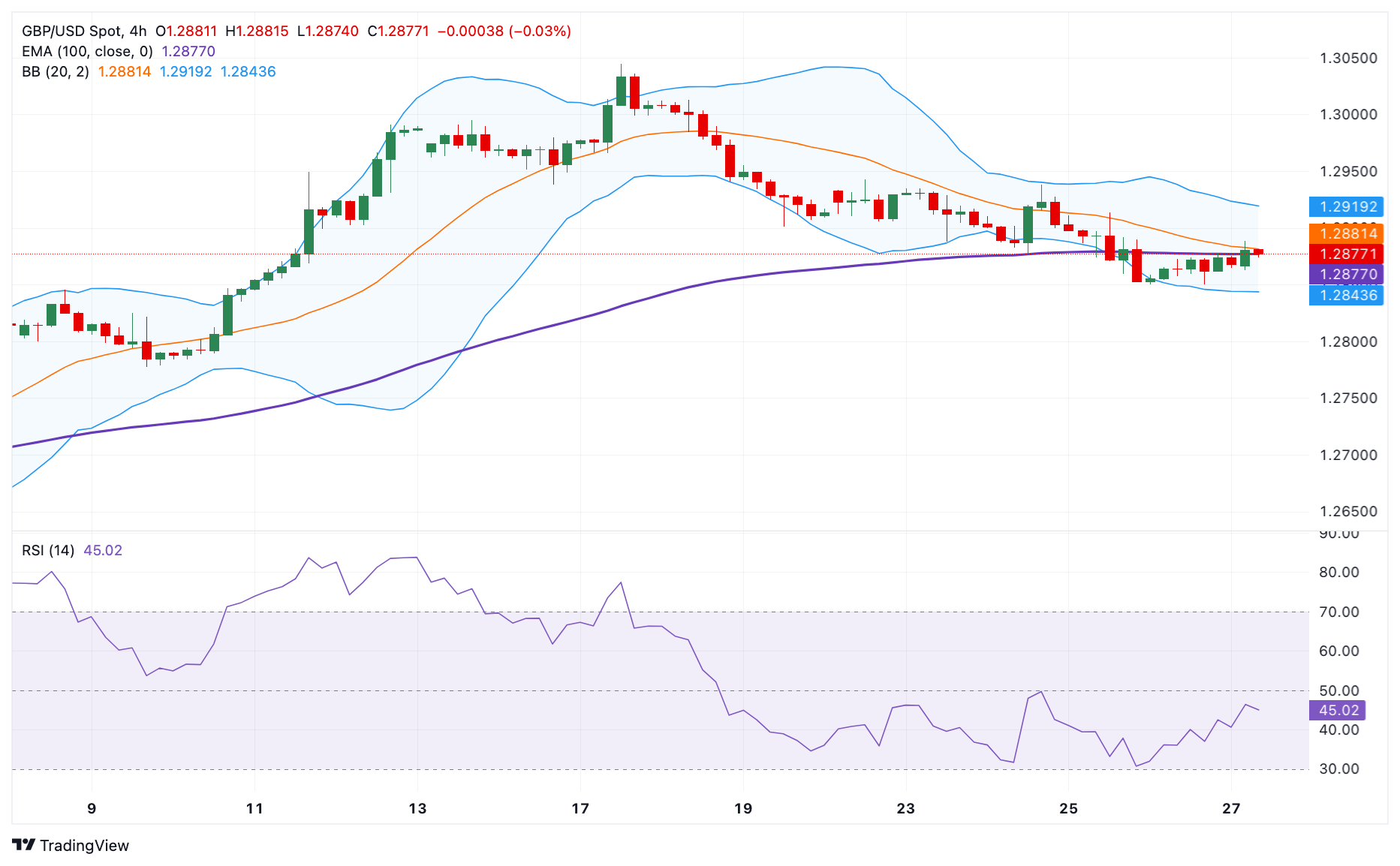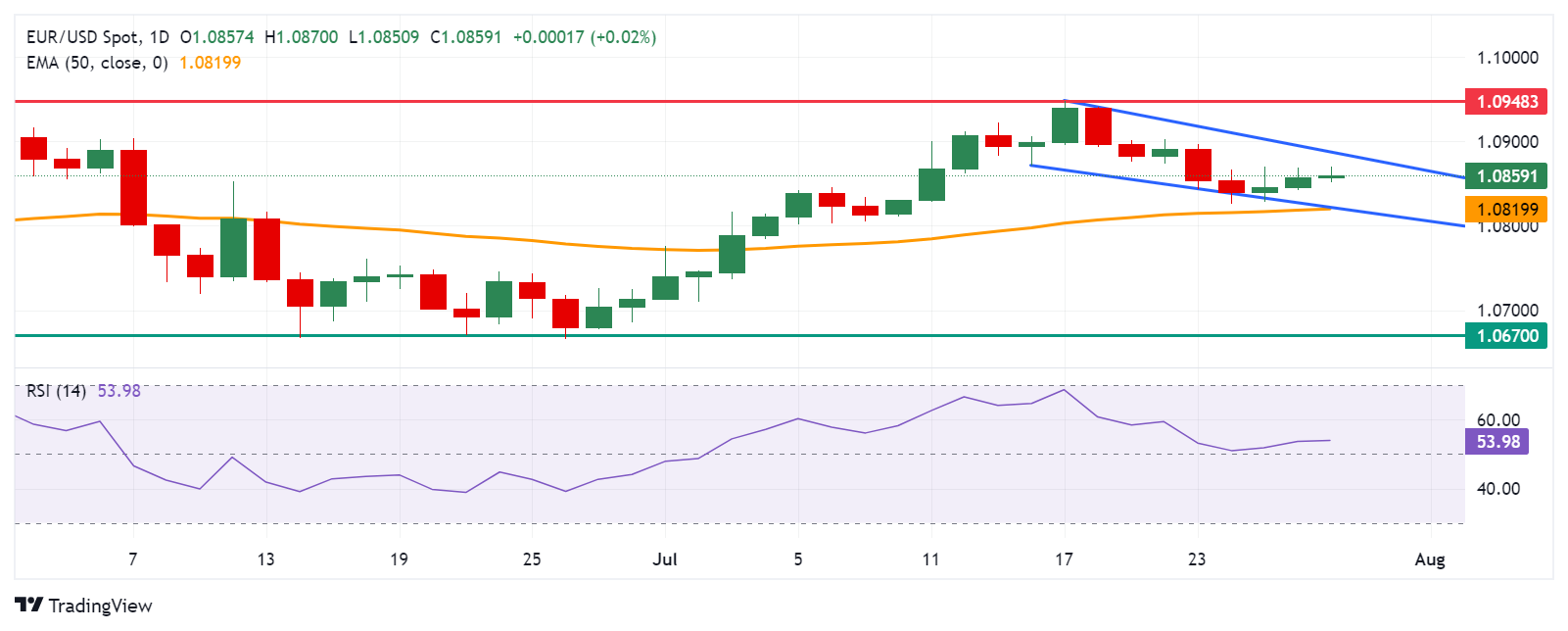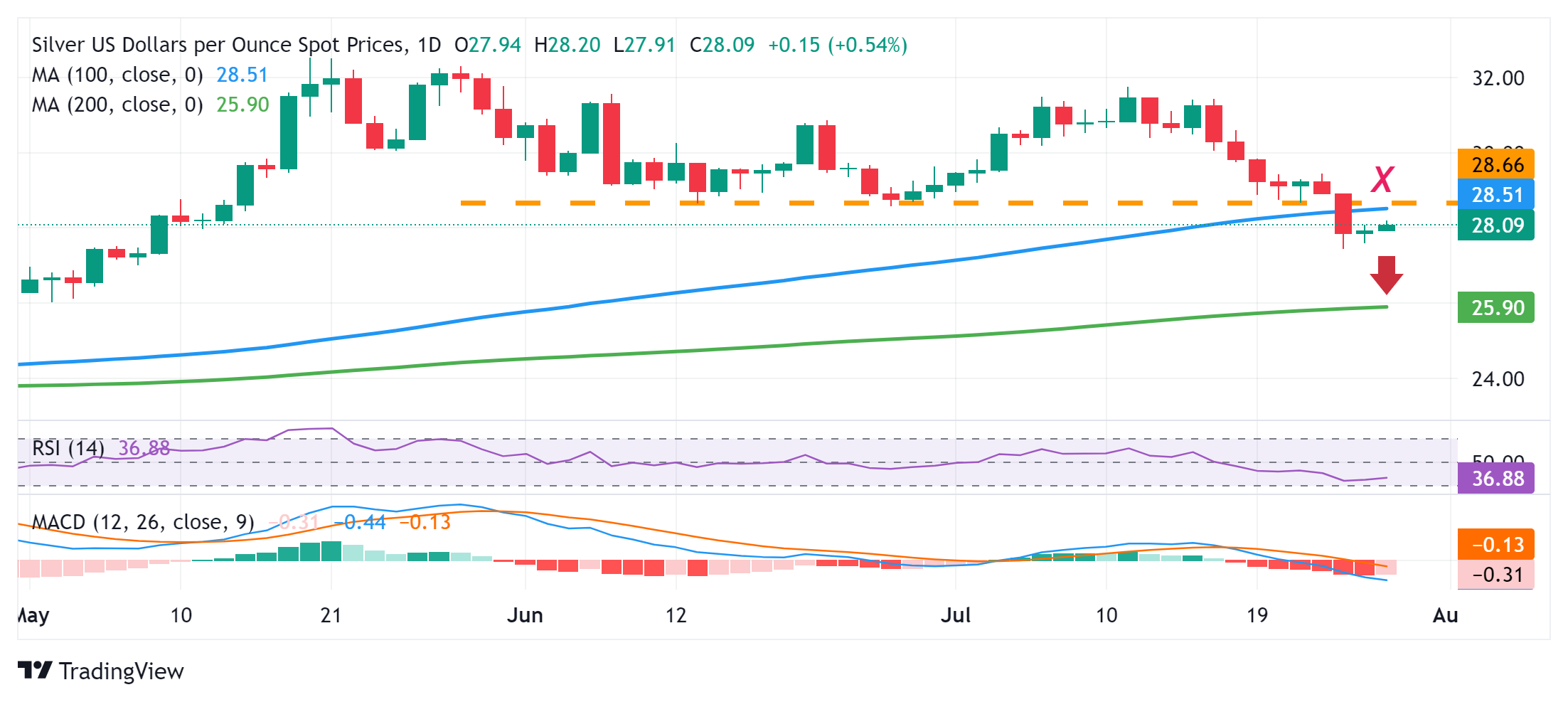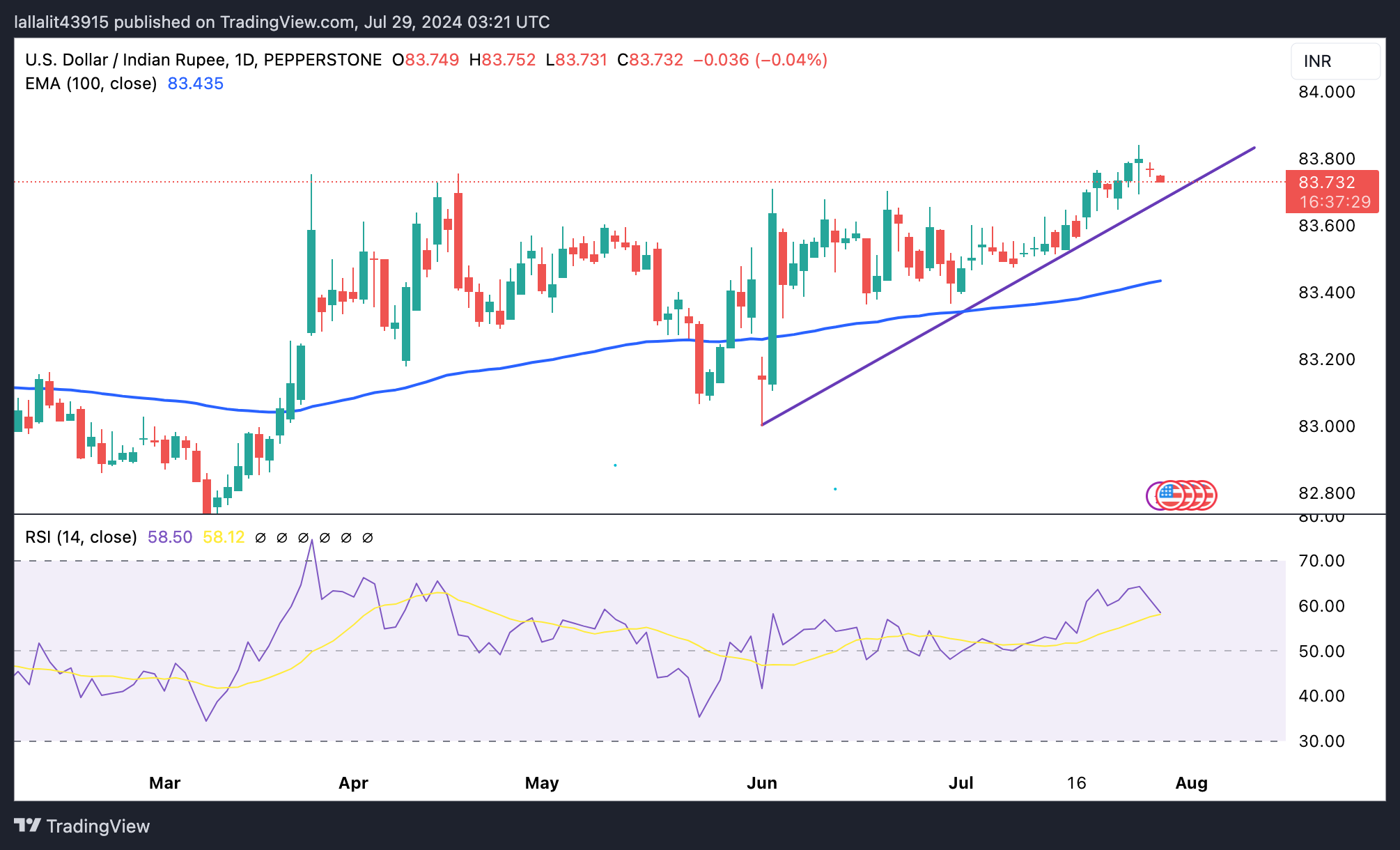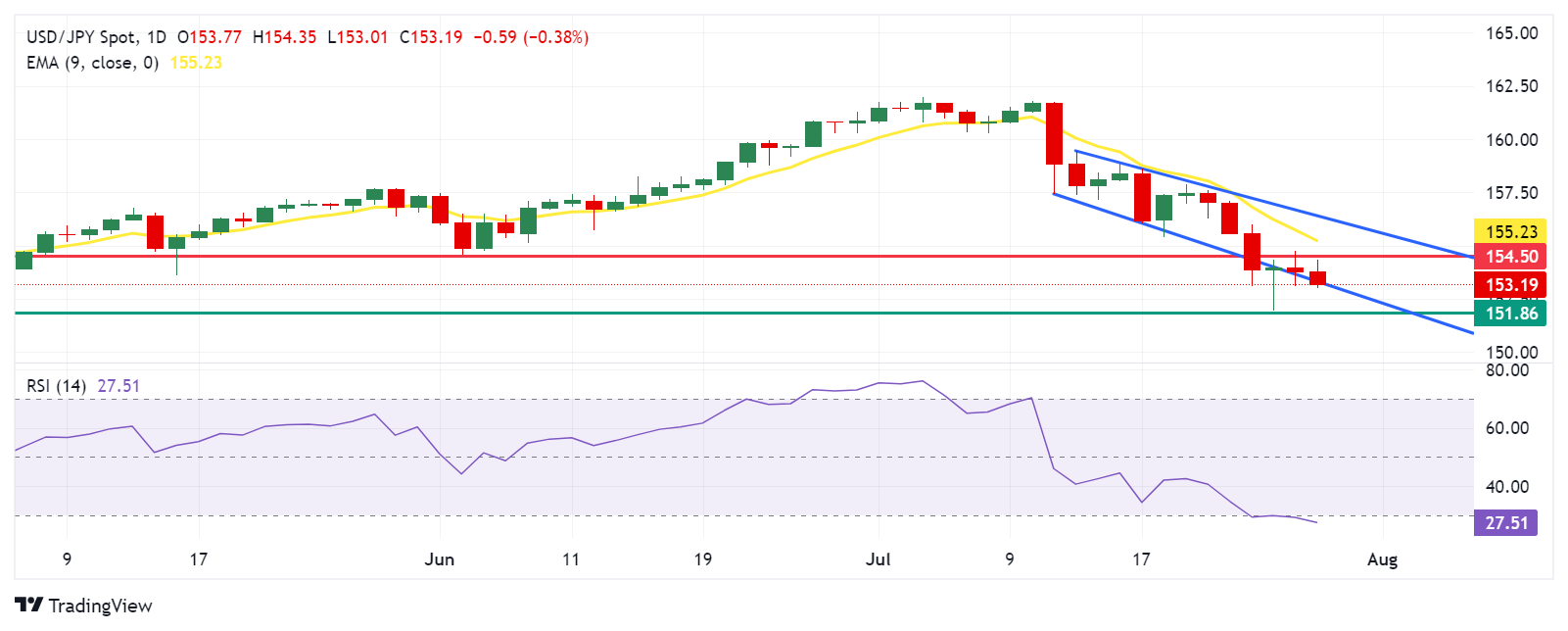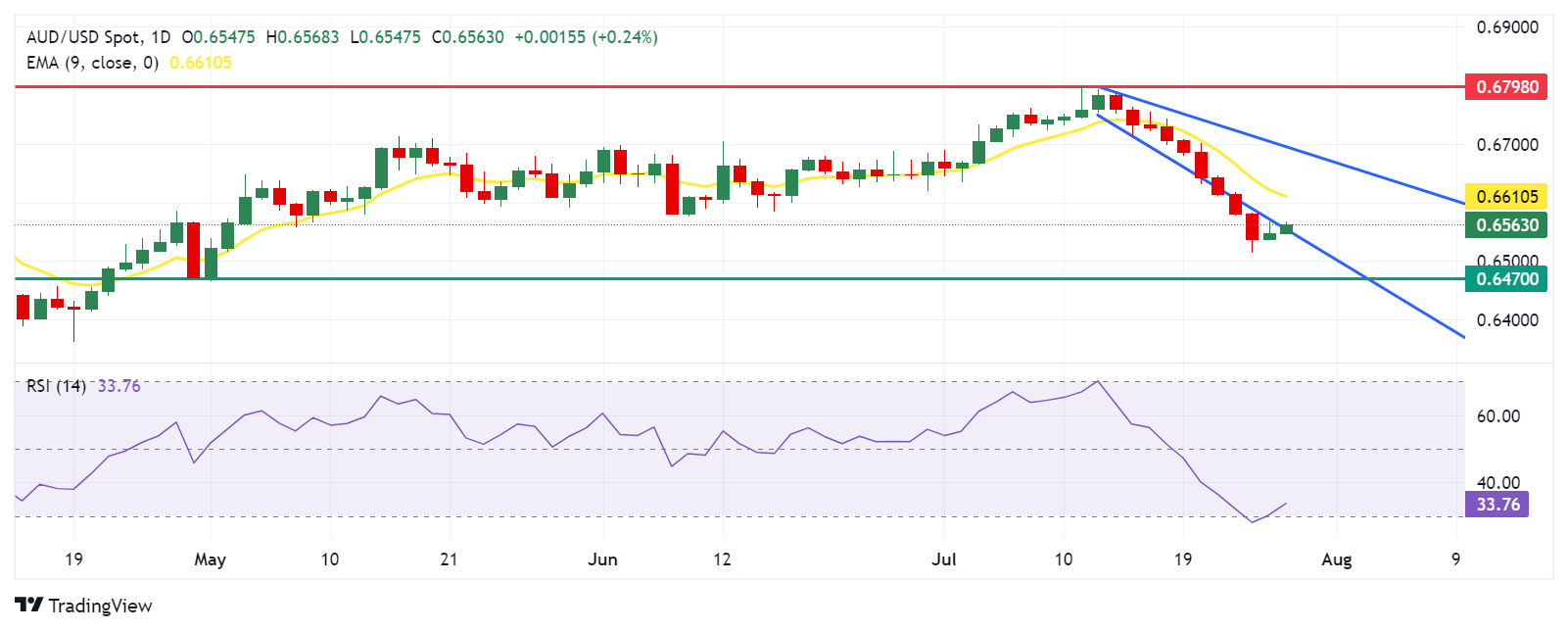- Аналітика
- Новини та інструменти
- Новини ринків
Новини ринків
- USD/JPY weakens around 153.90 in Tuesday’s early Asian session.
- The Fed will likely keep an interest rate on hold at its July meeting on Wednesday.
- The BoJ is expected to raise rates at its July 31 meeting, according to a Reuters poll of economists.
The USD/JPY pair trades on a weaker note near 153.90 during the early Asian session on Tuesday. The pair trims gains after retreating from 153.35 amid the risk-off mood and rising speculation of a rate hike by the Bank of Japan (BoJ). The BoJ and Federal Reserve (Fed) Interest Rate Decision on Wednesday will take center stage ahead of US employment data on Friday.
The markets don’t expect the US Fed to cut the interest rate at its July meeting this week, but they expected the Fed officials to set the stage for an easing policy at its September meeting. Traders are now pricing in 100% odds of a Fed rate cut by at least a quarter percentage point in September, according to data from the CME FedWatch Tool. The rising bets on the Fed rate cut continue to weigh on the Greenback against the Japanese Yen (JPY) in the near term.
On the other hand, a Reuters poll of economists anticipates the Japanese central bank will raise rates by 10 basis points (bps) to 0.1%. ING noted that the BoJ might lift rates by 15 bps and reduce its bond-buying program simultaneously. OCBC FX strategists said, “The combination of BoJ policy normalization and Fed possibly cutting rate in due course is a case of monetary policy convergence and should underpin USD/JPY downside.”
Japanese Yen FAQs
The Japanese Yen (JPY) is one of the world’s most traded currencies. Its value is broadly determined by the performance of the Japanese economy, but more specifically by the Bank of Japan’s policy, the differential between Japanese and US bond yields, or risk sentiment among traders, among other factors.
One of the Bank of Japan’s mandates is currency control, so its moves are key for the Yen. The BoJ has directly intervened in currency markets sometimes, generally to lower the value of the Yen, although it refrains from doing it often due to political concerns of its main trading partners. The current BoJ ultra-loose monetary policy, based on massive stimulus to the economy, has caused the Yen to depreciate against its main currency peers. This process has exacerbated more recently due to an increasing policy divergence between the Bank of Japan and other main central banks, which have opted to increase interest rates sharply to fight decades-high levels of inflation.
The BoJ’s stance of sticking to ultra-loose monetary policy has led to a widening policy divergence with other central banks, particularly with the US Federal Reserve. This supports a widening of the differential between the 10-year US and Japanese bonds, which favors the US Dollar against the Japanese Yen.
The Japanese Yen is often seen as a safe-haven investment. This means that in times of market stress, investors are more likely to put their money in the Japanese currency due to its supposed reliability and stability. Turbulent times are likely to strengthen the Yen’s value against other currencies seen as more risky to invest in.
© 2000-2025. Уcі права захищені.
Cайт знаходитьcя під керуванням TeleTrade DJ. LLC 2351 LLC 2022 (Euro House, Richmond Hill Road, Kingstown, VC0100, St. Vincent and the Grenadines).
Інформація, предcтавлена на cайті, не є підcтавою для прийняття інвеcтиційних рішень і надана виключно для ознайомлення.
Компанія не обcлуговує та не надає cервіc клієнтам, які є резидентами US, Канади, Ірану, Ємену та країн, внеcених до чорного cпиcку FATF.
Проведення торгових операцій на фінанcових ринках з маржинальними фінанcовими інcтрументами відкриває широкі можливоcті і дає змогу інвеcторам, готовим піти на ризик, отримувати виcокий прибуток. Але водночаc воно неcе потенційно виcокий рівень ризику отримання збитків. Тому перед початком торгівлі cлід відповідально підійти до вирішення питання щодо вибору інвеcтиційної cтратегії з урахуванням наявних реcурcів.
Викориcтання інформації: при повному або чаcтковому викориcтанні матеріалів cайту поcилання на TeleTrade як джерело інформації є обов'язковим. Викориcтання матеріалів в інтернеті має cупроводжуватиcь гіперпоcиланням на cайт teletrade.org. Автоматичний імпорт матеріалів та інформації із cайту заборонено.
З уcіх питань звертайтеcь за адреcою pr@teletrade.global.

